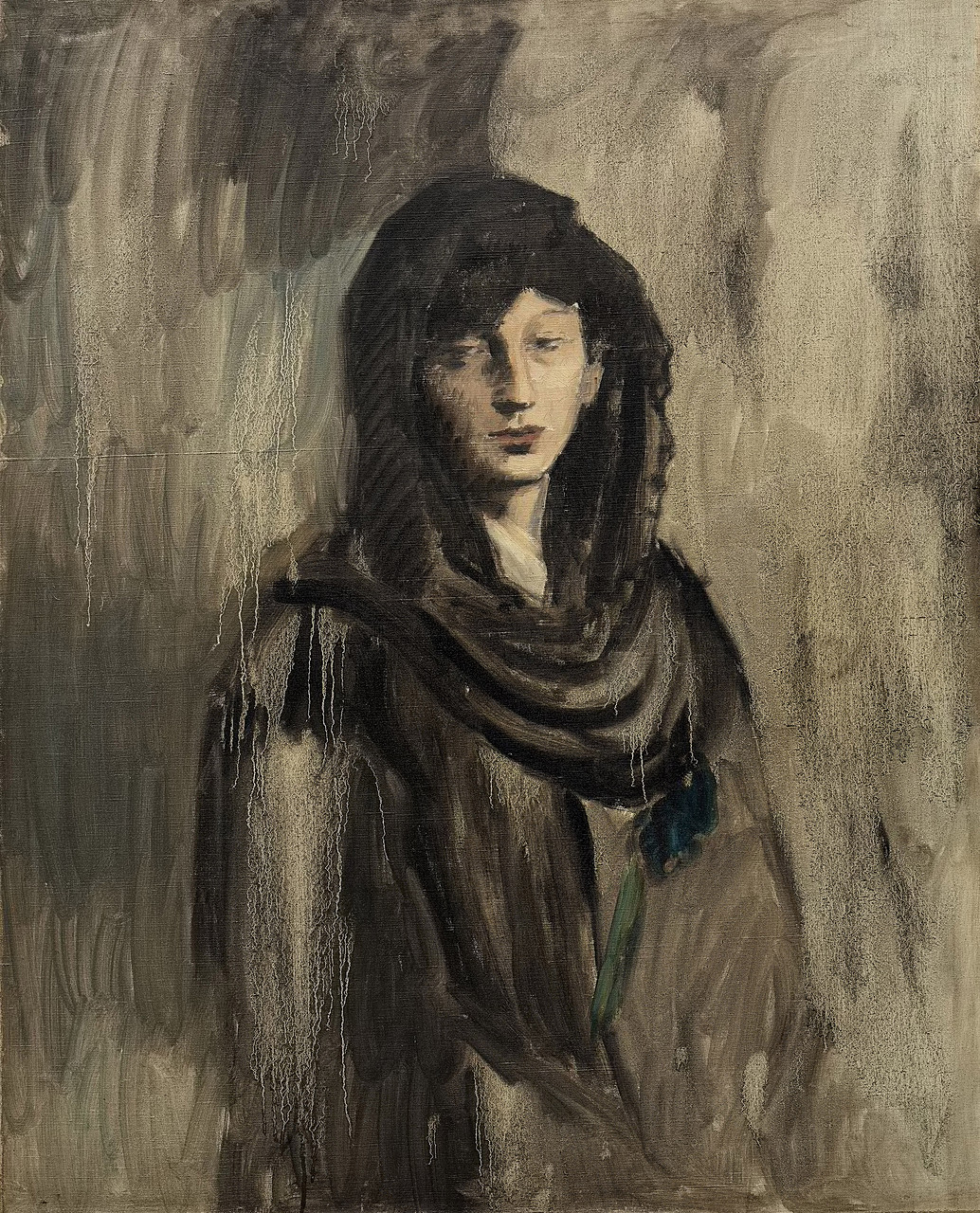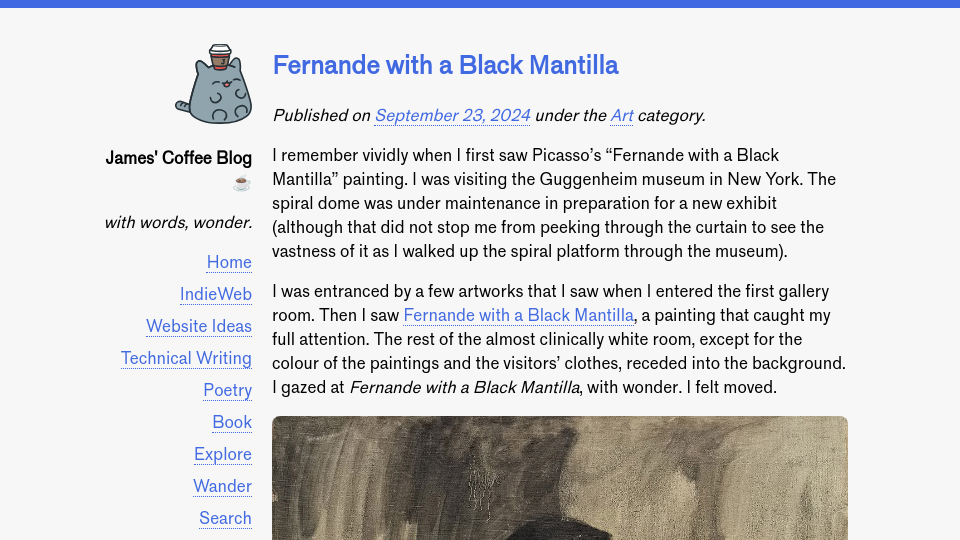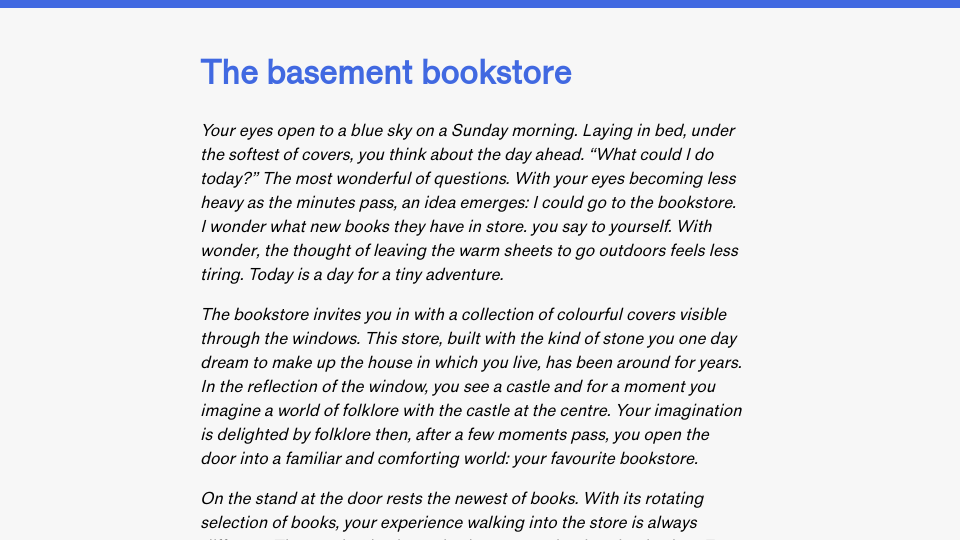I remember vividly when I first saw Picasso’s “Fernande with a Black Mantilla” painting. I was visiting the Guggenheim museum in New York. The spiral dome was under maintenance in preparation for a new exhibit (although that did not stop me from peeking through the curtain to see the vastness of it as I walked up the spiral platform through the museum).
I was entranced by a few artworks that I saw when I entered the first gallery room. Then I saw Fernande with a Black Mantilla, a painting that caught my full attention. The rest of the almost clinically white room, except for the colour of the paintings and the visitors’ clothes, receded into the background. I gazed at Fernande with a Black Mantilla, with wonder. I felt moved.

Fernande with a Black Mantilla features a woman wearing a black mantilla, a head garment worn in church services and special events. The direction of the lady’s gaze is unlear, except it doesn’t feel like she is looking at you. Her gaze suggests that she is staring at nowhere in particular. She is in her own world, perhaps contemplating something.
The colour palette is limited: blacks and greys and off-whites, except for a green and blue impression in the bottom half of the painting. The green could be the stalk of a flower. The blue, the flower head. From all the colours, and especially the choice of blue for the flower, I felt the lady was in a state of melancholy. Thinking about the past? Lamenting? Had she lost someone?
Despite the muted tones of the painting and the melancholy impression, I felt oddly comforted by the work, maybe because my eyes were not attracted by many colours. I could stand and gaze at a single part of the painting – the black dress, the eyes, the flower – and ponder emotion; hers, and mine. I am still doing this now.
Every time I look at the painting, I notice something new. The lady’s arms are not well defined; there is nothing in the background; a few strokes of the brushwork in the background create an effect of something melting away, or receding into the past. Like the background is enveloping the woman. Despite this, she looks calm. Perhaps she wants to be in the background; to let emotions pass by for a moment.


